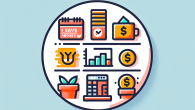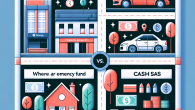
Buying My First Property While Investing: What I Got Right and Wrong
Why You Don’t Need to Be Rich to Reach Financial Independence
Let’s get one thing clear right out of the gate: you do not need to be a millionaire (or even close) to achieve financial independence. Yep, I said it. Despite what Instagram influencers and flashy YouTube “financial gurus” try to sell you, building wealth is not just for the ultra-rich sipping cold brew on a yacht somewhere in Bali.
I’m Rachel Simmons—coffee addict, spreadsheet enthusiast, and firm believer that smart, simple investing beats flashy complexity every time. If you’re serious about gaining control over your money and escaping the paycheck-to-paycheck rat race, keep reading. I’ll walk you through how regular people with average incomes are achieving financial independence—and how you can too.
What Does Financial Independence Actually Mean?
Before we dive deeper, let’s get our definitions straight. Financial independence (FI) means you’ve saved and invested enough that your assets generate enough income to cover your living expenses. That’s it. You can choose to work or not—but you’re not forced to work to survive.
Does it mean having $10 million in the bank and never clipping coupons again? Not at all. For most of us, FI is about reaching a point where:
- You have zero consumer debt
- Your monthly living costs are low and manageable
- Your investments (like index funds or real estate) generate steady passive income
- You have a solid emergency fund and can handle surprises without panic
The key isn’t how much you make—it’s how much you keep and how well you put that money to work.
The Big Lie: More Income Equals More Independence
We’ve all heard it: “If I just earned more, I’d finally feel secure.” But here’s the catch—income alone doesn’t build wealth. Lifestyle creep is real. I’ve coached folks earning $200,000+ a year who are still drowning in debt with no savings to show for it.
So stop asking, “How can I make more money?” Start asking, “How can I optimize how I use the money I already have?” Financial independence is 80% behavior and mindset, 20% income strategy.
How Regular People Achieve Financial Independence
Here’s the good news: you don’t need to win the lottery or invent the next Uber to reach FI. Here’s what works for average-income earners like teachers, nurses, retail workers—even freelancers with inconsistent paychecks (been there!).
1. Track Every Dollar (Without Shame)
This isn’t about guilt—it’s about awareness. Knowing where your money goes each month is a power move. Use apps like You Need a Budget (YNAB), Mint, or even a simple spreadsheet to track your spending. You’ll start spotting leaks faster than I spot clearance deals at Target.
2. Prioritize High-Impact Savings
Start with:
- Emergency fund: Aim for 3–6 months of basic expenses
- Debt repayment: Especially high-interest credit cards
- Retirement accounts: Maximize employer matches when possible (hello, free money!)
Want to get fancy? Explore Health Savings Accounts (HSAs), Roth IRAs, and low-fee index funds that let you grow your money tax-advantaged—without needing a finance degree.
3. Cut Expenses Without Feeling Deprived
Budgets shouldn’t feel like punishment. Cut ruthlessly on stuff you don’t care about, so you can spend guilt-free on what brings you joy (yes, I budget for daily lattes—don’t @ me).
Some easy savings wins:
- Cancel subscriptions you don’t use (check your App Store receipts!)
- Switch to cheaper phone or internet providers
- Meal plan to avoid waste and takeout bloat
- Buy used instead of new—hello, Facebook Marketplace!
4. Automate Your Wealth-Building
Wanna know the real secret to growing wealth on a modest income? Set it… and forget it. Automate your savings and investments. Even $25 a week into an index fund grows big over time thanks to compound interest.
Pro tip: Every time you get a raise or side hustle income, increase your savings rate before lifestyle creep kicks in. It’s like turning progress into muscle memory.
You Don’t Need to Retire at 35
There’s a lot of pressure in the FI community to “retire early” in your 30s and spend your days hiking or Instagramming van life. But financial independence isn’t one-size-fits-all. Maybe FI means switching to part-time work, freelancing on your terms, or taking a career break to care for family.
The common thread? Freedom of choice. That’s the real goal—not quitting a job you love just to prove some internet point.
How Much is “Enough”?
Great question. Most FIRE (Financial Independence, Retire Early) folks use the 4% Rule: if your annual expenses are $30,000, you’d need around $750,000 invested ($30,000 ÷ 0.04). But you can reach “coast FI” before full FI—meaning your investments are set to grow to your retirement goals even if you stop contributing today.
Think of it this way: every dollar you save now buys your future time back. Even if full financial independence feels far away right now, every step counts.
Small Dollars + Long Time = Serious Wealth
Let me throw a few numbers at you (don’t worry, I’ll keep it friendly):
- Saving $10/day and investing it at 7% for 25 years? Over $250,000.
- Investing $200/month for 30 years? Over $240,000.
- Cutting $150/month in subscriptions and redirecting it to a Roth IRA? Retirement game-changer.
Consistency beats intensity. Every. Single. Time.
Final Thoughts: Financial Independence Is a Lifestyle, Not a Number
You don’t need six figures coming in or a trust fund to buy your freedom. Financial independence is about being intentional: spending mindfully, saving consistently, and investing wisely.
Celebrate every debt paid off, every savings benchmark hit, every monthly budget completed. This journey rewards those who show up and stay focused—not those with the flashiest paychecks.
Want help getting started? Contact us for tools and tutorials to begin your path to financial freedom—or learn more about us here.
Remember: you don’t have to be rich to live richly. You just need the courage to take control.









Leave a Reply